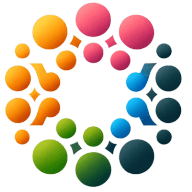9 Overlooked Aspects of Diversity that Deserve More Attention
Navigating the complexities of diversity goes beyond the usual conversations and practices. This article delves into 9 often-missed facets, enriched with insights from leading experts across various fields. It's an essential read for those looking to deepen their understanding and embrace a more comprehensive approach to diversity.
- Prioritize Physical Abilities in Workplace Diversity
- Promote Biodiversity in Urban Gardening
- Emphasize Cognitive Diversity in Problem Solving
- Foster Cognitive Diversity in Hiring Practices
- Broaden Recruitment for Diverse Career Paths
- Include Neurodiversity in Inclusion Efforts
- Celebrate Neurodiversity as an Asset
- Encourage Diversity of Thought
- Acknowledge Language Diversity's Impact
Prioritize Physical Abilities in Workplace Diversity
One often overlooked aspect of diversity is diversity in physical abilities and postural health within workplaces. In my 30 years as a physical therapist, I've observed that companies often prioritize diversity in terms of race, gender, and age but fail to account for the inclusion of employees with varying physical capabilities or chronic musculoskeletal conditions. For example, hybrid work environments have led to an increase in physical challenges for employees due to poor ergonomic setups at home, resulting in chronic pain and reduced productivity. Addressing this requires a broader view of diversity that incorporates physical health and accessibility, ensuring all employees can thrive in their work environment.
At The Alignment Studio, we recently partnered with a large financial firm to implement an inclusive workplace wellness program. This included ergonomic assessments, posture education workshops, and tailored exercise plans for employees with chronic back and neck pain. Drawing on my extensive experience in postural health and orthopedic rehabilitation, we reduced musculoskeletal complaints across the office by 30 percent in just six months. By integrating wellness into diversity strategies, businesses not only support their staff but also enhance productivity and morale. Raising awareness involves starting conversations about physical diversity and investing in solutions that make workplaces more accessible and inclusive for all employees.

Promote Biodiversity in Urban Gardening
One overlooked aspect of diversity that deserves more attention is biodiversity in urban gardening. In my 15 years as a horticulturist, I've noticed that many urban gardens focus on aesthetics or functionality but often overlook the importance of planting a diverse range of native species. Biodiversity in the garden isn't just about variety for variety's sake. It directly impacts pollinators, soil health, and even pest control, creating a more sustainable and resilient ecosystem. For example, in a project I recently completed for a client, I transformed a basic lawn space into a thriving garden by incorporating over 20 native plant species. This not only attracted bees, butterflies, and birds but also reduced the need for chemical pesticides as the ecosystem balanced itself naturally. Watching that garden evolve into a vibrant, self-sustaining habitat was a reminder of how much impact biodiversity can have, even on a small scale.
Raising awareness starts with education. In my business, Ozzie Mowing and Gardening, I make it a point to discuss these benefits with clients and showcase successful projects that embrace biodiversity. Community workshops are another powerful way to spread this message. A few years ago, I hosted a garden day at a local school, where we planted a pollinator-friendly garden. Seeing kids light up as they learned about native plants and their importance was incredibly rewarding. With my formal training in horticulture and years of hands-on experience, I've found that combining practical application with education inspires people to think beyond the surface of their gardens and embrace practices that nurture both beauty and biodiversity.
Emphasize Cognitive Diversity in Problem Solving
One often overlooked aspect of diversity is cognitive diversity, which focuses on the unique ways individuals think, solve problems, and approach challenges. While businesses tend to prioritize visible diversity, such as gender and ethnicity, cognitive diversity can be the hidden engine that drives innovation and problem solving. In one instance, I worked with a struggling mid-sized manufacturing company that was grappling with stagnant growth and operational inefficiencies. The leadership team was composed of highly skilled individuals, but they all had similar academic backgrounds and professional experiences. Their decision-making often lacked creativity and adaptability because they approached problems in nearly identical ways.
Drawing on my experience in turning businesses around and my deep understanding of team dynamics, I recommended a radical restructuring of their hiring and collaboration strategies. We focused on integrating individuals with diverse professional experiences, including those from different industries, educational paths, and even unconventional career trajectories. For example, we brought in someone with a background in industrial design and another individual who had been an operations officer in the military. Their fresh perspectives challenged the existing team's thought processes and introduced new approaches to problem-solving. Within a year, the company saw a 40% increase in productivity and significant cost savings due to innovative operational strategies. This outcome was possible because my years of international coaching experience have taught me how to identify and nurture these often-overlooked traits, transforming teams into high-performing units. To bring more awareness to cognitive diversity, businesses must actively train leaders to recognize and value diverse thinking styles and integrate this principle into their hiring, mentoring, and team-building practices.
Foster Cognitive Diversity in Hiring Practices
One often overlooked aspect of diversity is cognitive diversity-the inclusion of people with different ways of thinking, problem-solving, and approaching challenges. While diversity in terms of race, gender, and background is critical, fostering teams with varied thought processes and perspectives can lead to more innovative solutions and well-rounded strategies.
To bring more awareness to cognitive diversity, organizations can start by emphasizing it in hiring practices and team-building exercises. For example, using assessments to understand team members' thinking styles or decision-making approaches can help identify gaps and ensure a balanced mix of perspectives. Additionally, promoting an environment where unconventional ideas are welcomed and valued encourages individuals to bring their unique viewpoints to the table.
Awareness can also be raised through training and leadership development programs that highlight the benefits of cognitive diversity in driving innovation and overcoming groupthink. Sharing success stories where diverse thinking led to breakthrough results can inspire others to prioritize this aspect within their teams and organizations.
Broaden Recruitment for Diverse Career Paths
Most business leaders by this point understand the value of a diverse team to bring a variety of perspectives and backgrounds into your decision making process. Where I think there's often a disconnect is that many leaders don't consider the implications of these varying perspectives. People from different backgrounds will also often take different paths to build their career, something that will often be reflected in the education and experience on their resume.
Where this mostly comes into play is during the recruitment process. If your goal is to welcome applicants from diverse backgrounds, you can't simply rehash the same qualifications you've used in the past. These often are tailored to the typical career path of the majority, and often will need to be adjusted if you want people who took alternate paths to feel like they're welcomed to apply.
I often get pushback initially when I bring this up to clients. There's a perception that altering qualifications is equivalent to lowering your standards for the role, but that's not the case. You can still seek out only the most qualified applicants while broadening your definition of what determines whether someone meets the job's requirements. One thing that I think can help broaden awareness of this issue is if hiring managers are better educated about the alternative education or training options available to the roles they fill, beyond college degrees or expected prior job titles. If there's more visibility for professionals who took non-traditional paths and are thriving in their career, then hiring managers will feel more confident they'll be able to make strong hires without relying on degrees to vet their skills.

Include Neurodiversity in Inclusion Efforts
One aspect of diversity that doesn't get enough attention is neurodiversity: the idea that people's brains work in different ways, like those with autism, ADHD, or dyslexia. We talk a lot about race, gender, and culture when it comes to inclusion, but we often forget how important it is to include and support people who think and process the world differently. These differences bring fresh ideas, unique problem-solving skills, and creativity, but many neurodivergent people face unnecessary challenges because the world isn't always designed with them in mind.
To change this, we need to start having open, honest conversations about neurodiversity. Education makes a big difference, whether it's through workshops, stories shared by neurodivergent people, or just making it part of how we talk about inclusion. Workplaces can lead the way by offering flexible environments, training managers to better understand and support neurodivergent employees, and making sure hiring processes don't exclude people who think differently.
What's important is recognizing neurodiversity as a strength, not a challenge. By celebrating it and including it in our conversations about diversity, we can create a world where everyone, no matter how they see or process things, feels valued and has the chance to shine.

Celebrate Neurodiversity as an Asset
One overlooked aspect of diversity in 2025 is neurodiversity, the recognition that differences in how people's brains work—such as ADHD, autism, or dyslexia—are assets, not deficits. Despite growing awareness, many workplaces still treat neurodivergence as something to accommodate rather than celebrate. This leaves untapped potential for innovation, creativity, and problem-solving. To bring more awareness, we need to rethink hiring and work structures: embracing flexible schedules, reimagining job descriptions to focus on strengths, and normalizing open conversations about neurodivergence. Highlighting success stories of neurodivergent leaders and creators can help shift the narrative from accommodation to appreciation, proving that diversity of thought is as critical as diversity of identity.
Encourage Diversity of Thought
An often-overlooked aspect of diversity is diversity of thought—ensuring varied perspectives shaped by experiences and problem-solving approaches. To raise awareness, leaders can foster environments where unconventional ideas are welcomed and recruit from diverse industries and backgrounds. Highlighting team successes driven by varied viewpoints can demonstrate the value of cognitive diversity, encouraging innovation and collaboration.

Acknowledge Language Diversity's Impact
I believe we overlook language diversity. Language impacts how we think and how we interact with those around us. Studies have shown that language actually changes how our brains work. It is important to understand how language impacts our perspective to understand others and their communications. We overlook how our view of the world is shaped by our primary language and even the dialects we speak. Learning another language can help bridge this gap of understanding, or just learning about other cultures and languages can help open one's mind to the diversity language brings us.






